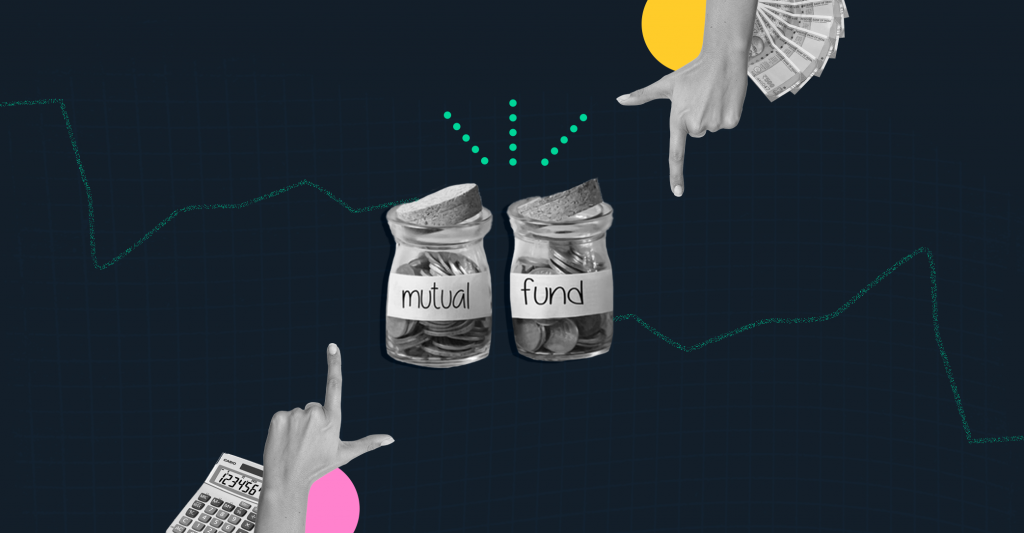Last Updated on Sep 2, 2021 by Kushal Dudheria
When it is about your hard-earned money, it’s natural to have doubts over any investment avenue and risks incidental to it. There’s no need to reiterate that returns come with an inherent market risk and that capital gains associated with mutual funds are no exception. Investments in mutual funds are all about taking ‘calculated risks’; it is not speculation or wagering.
The assets are handled by highly experienced fund managers and are backed by extensive research. A mutual fund is a financial instrument that is made up of a pool of funds collected from numerous investors and is further invented in the market. A mutual fund operates based on the investment objectives laid out in its prospectus.
This article covers:
- Are mutual funds safe for investing?
- Different Risks associated with mutual fund investments
- How to assess if a mutual fund is safe for investment
- Top 5 factors worth evaluating while ensuring the safety of a mutual fund
Table of Contents
Are mutual funds safe for investing?
Since ‘safety’ is a highly subjective term in finance, it’s not easy to answer in a yes or no whether mutual funds are safe. In layman language, a mutual fund is a pool of resources collected from retail and institutional investors invested in equity, debt and other market securities. It is subject to as much market risk as the stock market itself, or has similar risks as other assets if the mutual fund you choose is a debt fund or a fund that invests in other asset classes like commodities.
Then, why must you invest in mutual funds and not in direct assets? Because mutual funds come with the advantage of the presence of a fund manager who is a professional and has the expertise to navigate choppy markets and manage the fund portfolio. Also, portfolio diversification happens within a single product which otherwise means you have to manually research and pick assets across segments to diversify your risks.
In the case of mutual funds, the Securities Exchange Board of India(SEBI) and the Association of Mutual Funds in India(AMFI) have got the backing of investors. Their transparent rules and regulations ensure the smooth operation of all the domestic asset management companies.
Different Risks associated with mutual fund investments
There are mainly four kinds of risks associated with mutual fund investing:
- Market Risk
- Concentration Risk
- Interest Rate Risk
- Liquidity Risk
1. Market Risk
“Mutual funds are subject to market risks.” You must have heard this disclaimer innumerable times. Markets are always fluctuating. Market sentiments are affected by several factors that are not all in our control like:
- Political instability
- Discouraging global sentiments
- Recession
- Natural Calamity (like Covid-19 or Cyclone)
- GDP growth
- Interest rate fluctuations
It’s vital to note that corrections in the market are inevitable, as markets don’t move at a 90-degree curve. But investors should not panic; they have to wait for the market sentiments to become positive.
2. Concentration Risk
Let’s say mutual fund ‘M’ has given the highest returns in a year. Now you are planning to invest all your savings in a mutual fund ‘M’. Concentration of all your capital in just one financial instrument is not advisable. Because in that case, your fate would be closely associated with the performance of that one particular fund.
Diversifying your portfolio is always a good idea because that brings the law of averages into play. You should make portions of your capital and invest it in diverse mutual funds, preferably with varying investment strategies. Verifying the portfolio overlap may be a good way to assess concentration risk in mutual funds.
3. Liquidity Risk
A certain class of open-ended mutual funds like ELSS or solution-oriented funds such as children’s saving schemes or retirement funds come with a definite lock-in period, and there is nothing you can do to liquidate your funds in the meantime. This lock-in period may range from 1-5 yrs, depending upon the mutual fund opted. It’s wise to keep track of your liquidity needs and invest in mutual funds accordingly.
4. Credit Risk
When the mutual fund cannot reward you with the promised interest rate, credit risk arises. Mutual funds are rated by rating agencies based on their past track record. Higher-rated mutual funds generally pay less than their lower-rated counterparts.
We come across this because lower-rated funds sometimes add lower credit-rated securities to their portfolio in the quest to earn more returns. But this exposes them to credit risk. Hence, to be on the safer side, do a background check on the portfolio and credit ratings of the mutual funds before investing.
How to assess if a mutual fund is safe for investment?
Every individual has a risk-bearing capacity. For example, someone in their early 20’s might prefer going out all guns blazing in the hunt for extraordinary returns, while someone in his late 50’s might look to buy himself a happy retirement by earning modest returns.
Riskometer: A tool devised to assess the risk profile of every mutual fund. It has six levels marked by different colour codes.
Low-risk level: While these mutual funds don’t offer huge returns, they are the safest in the class. Their portfolio majorly consists of government securities, fixed maturity plans, income funds, and gilt funds.
Low to moderate-risk level: Investors who can stay invested for 1-3 yrs can invest in moderately low-risk level funds. The pool of funds is invested in short-term securities bonds with a maturity of 1-3 yrs.
Moderate-risk level: Investors who have a decent risk appetite and are looking to reap some profits while staying within safe boundaries can invest in moderate risk level funds. The portfolio is made up of MIP funds, arbitrage funds, and hybrid debt-oriented funds.
Moderately high-risk level: The portfolio of moderately high-risk level funds consists of diversified equity funds, balanced equity-oriented funds, and gold ETFs. Investors looking to stay invested for longer durations and reaping constant returns in the meantime should look for them.
High-risk level: Investors having a good risk appetite and are looking to bear risks for overwhelming returns in the longer period invest in high-risk level funds. The portfolio consists of securities such as sectoral funds, international funds, and micro-cap funds.
Very High risk level: Very High risk level is introduced by SEBI on 1st Jan 2021. SEBI now requires fund houses to classify funds into six and not five risk levels. ‘Very high’ risk category will be allotted to large-cap funds, sectoral funds and thematic funds.
Top 5 factors worth evaluating while ensuring the safety of a mutual fund
Returns
We invest in mutual funds to earn returns. While there are mutual funds that yield over double the rate of returns offered by FD’s and RD’s, you should have a sound understanding of your risk appetite before investing. Lower the risk, the lower the returns; higher the risk, higher the potential for rewards – applies to mutual funds too.
Uncertainty Factor
The future is unpredictable, and unlike traditional financial instruments, the SIP feature of mutual funds gives you cover against it. You can pause and continue a SIP investment as and when you deem fit. That said, mutual funds are subject to uncertainty due to the exposure to equity markets.
A potential substitute for a loan if planned well
The capital gains arising out of mutual funds when you stay invested for a long duration (10-15 yrs) might be sufficient to fund your financial goal if planned well. It could serve to buy a car or take a vacation or even buy a home for which alternatively you would have to take a loan.
Availability of diverse options
You have the luxury to choose mutual funds based on your risk appetite, the fund’s risk profile, instruments in the fund’s portfolio, sector or securities, and so on. There is a mutual fund for nearly everyone!
Tax benefits
The ELSS mutual fund scheme allows you to avail income tax deductions of up to Rs 1.5 lakh under Section 80C of income tax! Moreover, LTCG arising from mutual funds are taxed at a flat 10% (exempt up to Rs 1 lakh) even if you belong to the 30% tax bracket.





